“One museum, two museums” was the motto of the project submitted to the international competition, won in 2015 by Portuguese architect Manuel Aires Mateus with engineer Rui Furtado for the construction of the new architecture in Lausanne. The building simultaneously hosts two museums: the mudac, Museum of Contemporary Design and Applied Arts, and the Photo Elysée.
In the initial masterplan of Plateforme 10, the idea was to hold two different competitions for the two museums to be built, to make the result and the cultural attraction even richer. And since Aires Mateus’ building was realised later than Barozzi-Veiga’s MCBA building, temporally and spatially, the design intent for completing the block was to create an independent, pure, compact and clear structure but at the same time permeable, clearly visible from afar in its formal clarity.
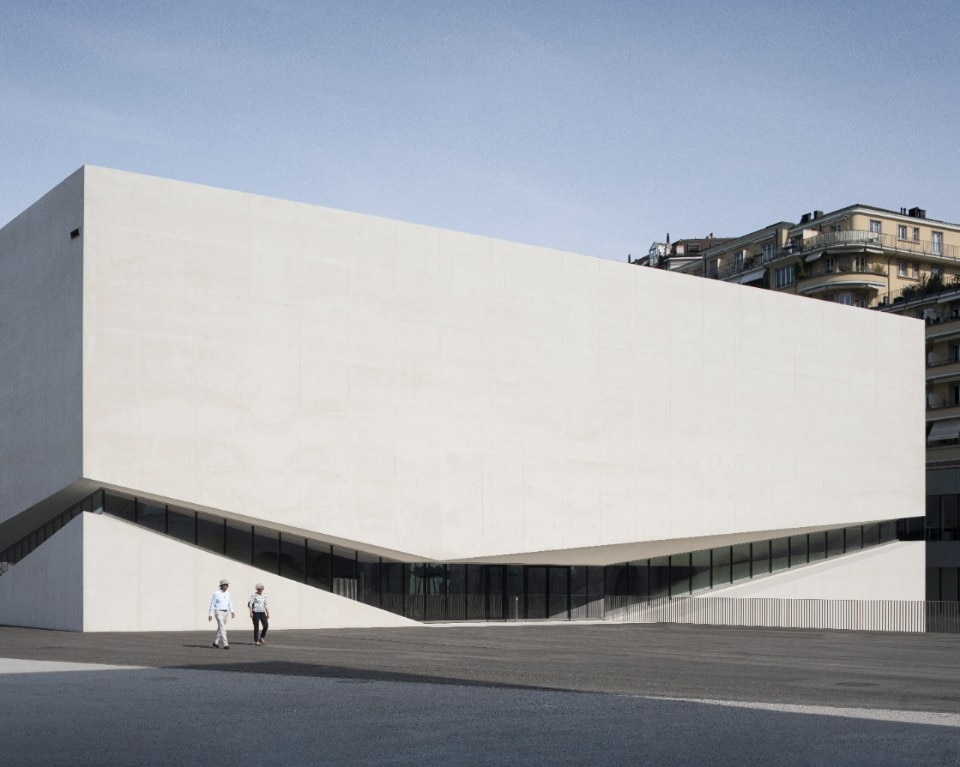
Two volumes, a single primary form
The result is an iconic architecture, an urban landmark, composed mainly of a regular (semi-)cubic solid with a plan of 42 metres per side. Surrounding this primary form, pure and enigmatic, recomposed by two volumes – one suspended and one embedded in the ground – that contain large spaces and offer their free sides to the long perspective of the square and the linearity of the railway, in the bearing wall there is a slender and broken secondary body that surrounds the primary block and hosts the offices of the two museums and common service areas. On the flat roofs between the architecture and the city, there are pedestrian walkways and a roof garden with a privileged view of the landscape, and in a semi-hidden corner there is another “secret” underground courtyard garden where the library and the research centre are located.
Designed with clearly visible outlines, the isolated block is cracked on two faces by a transparent, oblique crack, and from this central horizontal split (a large, continuous double-V extended glass window), which symbolically is a sort of architectural “big smile” – as mudac director Chantal Prod’Hom likes to imagine it – one enters its interior.
The horizontal opening sign “paraphrases” a ribbon window, a perhaps unconscious tribute to the invention of this typology, conceived by Le Corbusier in 1923 (and symbol of the rising Modern Architecture) just a few kilometres from Lausanne, in Vevey, for the Villa Le Lac, designed for the architect’s mother.
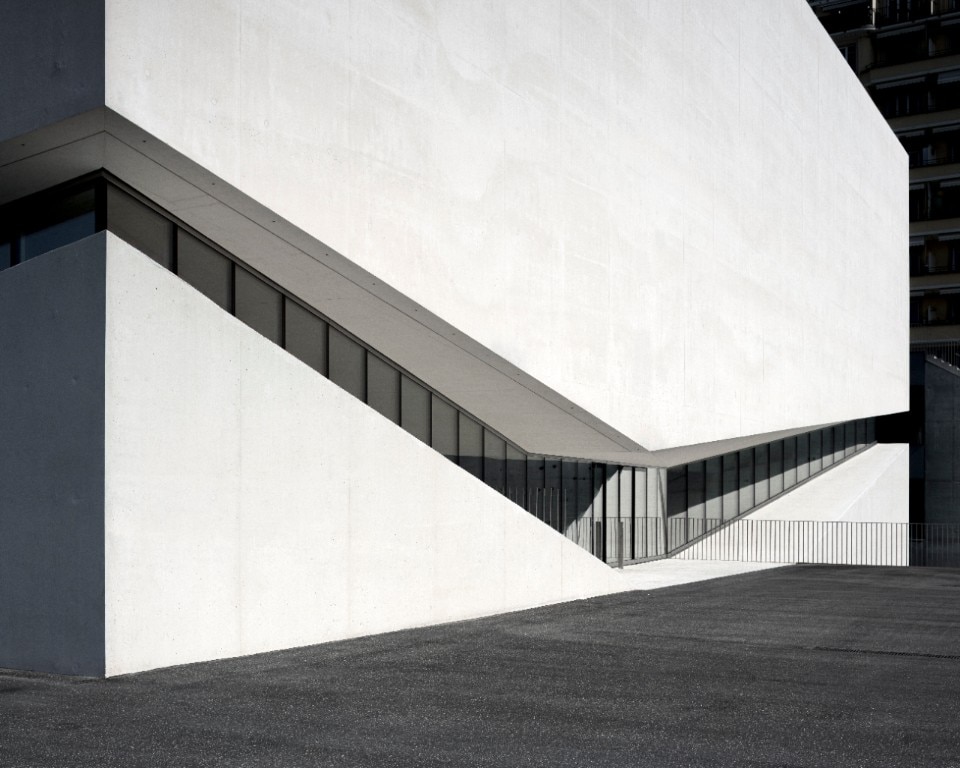
One hall for two museums
The flush entrance between the two overlapping shells leads to a large hall that seems excavated, a plastic cave under a complex, sloping polygonal vault resting sculpturally on the ground: a new kind of cavern for culture.
On just three load-bearing points – to call them pillars is reductive – pass 44 beams tracing more than 70 irregular triangular facets, suspending the upper volume made of more than 1,000 tonnes of exposed white reinforced concrete.
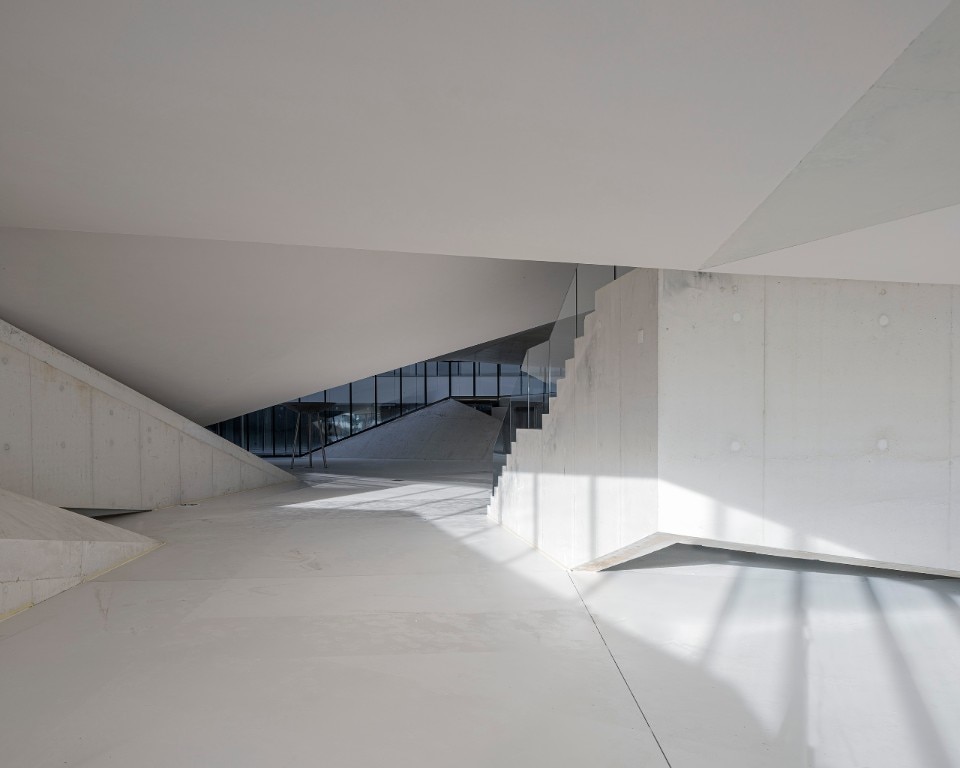
In this scenic and spectacular foyer, the viewpoints are ever-changing in a continuous physical and visual flow that links the inside and the outside, the above and the below, to create a particular, dynamic and involving spatial sensation. Here the reception areas, a café, a book and souvenir shop are located, as well as a large central staircase, transversal to the main entrance, which leads up or down to two exhibition spaces that belong to the two independent museums. Since a photography museum needs minimal and controlled light and a design museum needs more natural and diffuse light, below, in a black box in the half-light – ideal for storing and exhibiting photographs – there is the new Photo Elysée.
The design museum, on the other hand, is located above, in a white box with diffuse and integrated overhead lighting, with the exception of a large corner glass window, a triangular eye framing the lake and the Alps.
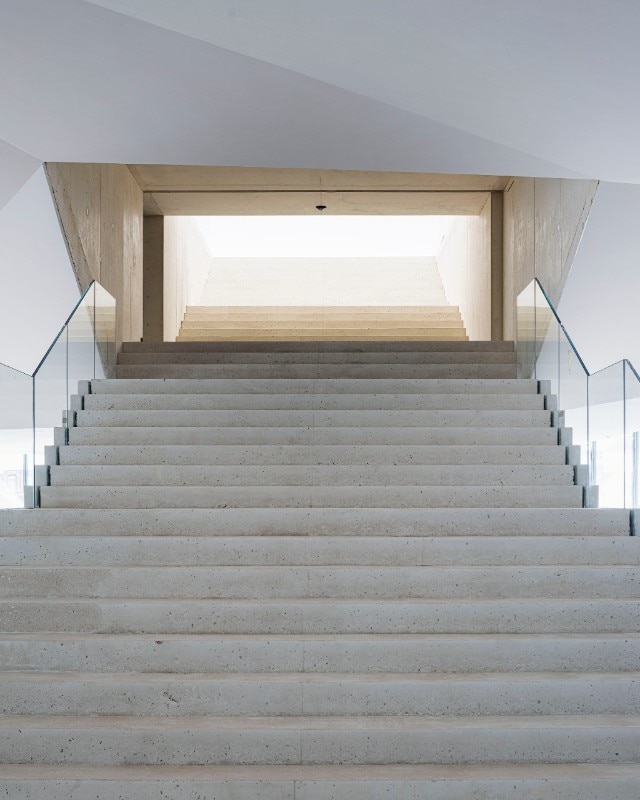
La Fenêtre Chantal and unisex toilets
This special window has already been renamed Fenêtre Chantal, as the director commissioned it against the architect’s original intention, in that healthy and sometimes tough but always fair debate that naturally must take place between client and architectural designer. Ernesto Nathan Rogers used to say that it is very difficult to make architecture from good commissioning, but without it, it is impossible.
Another example of a direct request – as a usage detail, minimal but also significant for architecture – evidently suggested by the design museum’s management and clearly representing its unconventional, bold and proactive vision of the discipline in contemporary society, are the toilets. No longer separated between the two sexes, but combined together in a single space to be shared according to gender. This apparently secondary condition in the reading of the building is instead something that immediately makes the visitors realise they are being welcomed in a new way, in a new world.
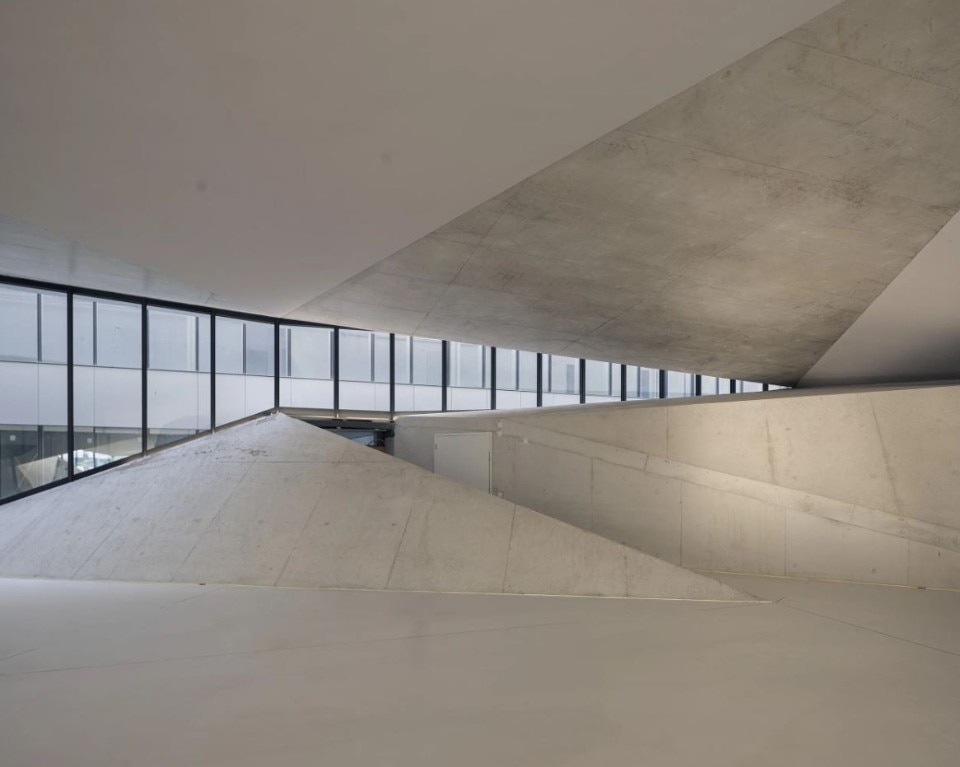
From the Museum of Decorative Arts to mudac
The museum that is being renovated today was founded in 1967 as the Lausanne City Museum of Decorative Arts and in 2000 became mudac, transformed and relocated to the upper city, in front of the Cathedral, in a beautiful and historic 17th-century residence, Maison Gaudard. Here, under the visionary direction of the aforementioned Chantal Prod’Hom, close to her well-deserved retirement – passing the baton to a new director, Italian but cosmopolitan and with an interestingly fluid vision of design – dozens of new exhibitions have programmatically redefined the role of the applied arts by investigating the facets of contemporary design.
Since its creation, mudac has been a museum oriented to the present, to the issues of the society. Its identity has therefore always been and is still changing, as is required of a cultural institution that deals with the contemporary, always following the most prosperous ramification of the lines of plurality.
Now that the museum has found its permanent location directly related to the other arts at Plateforme 10, the watchwords to guide its spirit of research are audacity, commitment, ambition, passion, accessibility and interdisciplinarity.
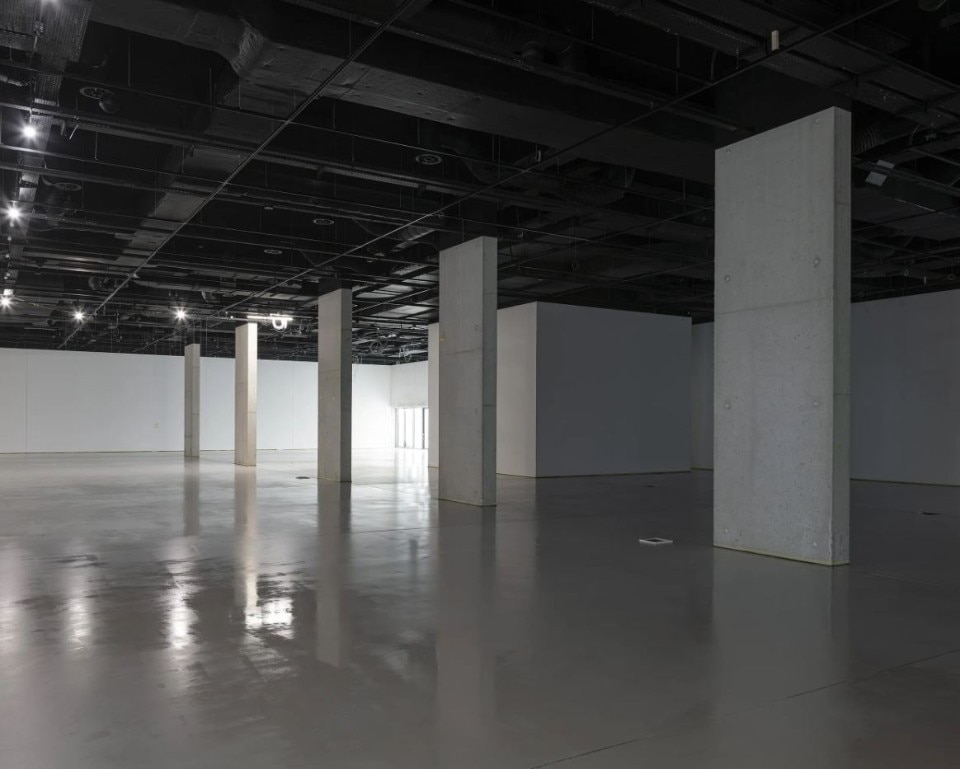
In addition to temporary exhibitions that can challenge and question the role of design, mudac also houses a special collection that is constantly being expanded. Starting with a core of thousands of pieces of applied arts on glass, ceramics, jewellery and graphics, over the years the collection has been enriched with around 1,000 works of contemporary design, often unique pieces by emerging or established designers commissioned and created specifically for the exhibitions held at the museum.
And so, today, in the new museum of design – with an exhibition area of around 1,500 square metres – one side consists of a wing for the temporary rotation of the permanent collection, the pivot point is a hinge area for cultural mediation, and the centre, as the primary space at the top of the access staircase, features a large free and flexible space for temporary exhibitions.
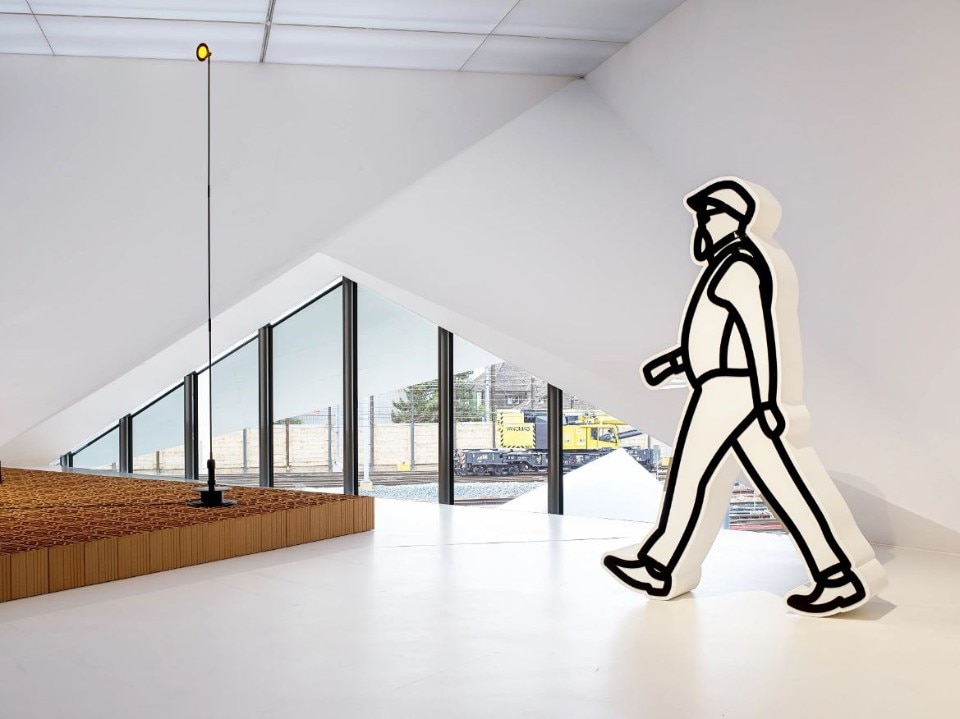
For the opening and inauguration exhibition, mudac has interpreted the theme of the “Train” – shared by the museums of Plateforme 10 – with the title Rencontrons-nous à la gare. The theme of encounter, also between disciplines, is the main focus. The objects and works exhibited in an installation, designed in collaboration with the HEAD – Genève, dialogue in a narrative context bordering on the literary, ideally set in a “roman de gare” (Terre-des-Fins, Editions ZOE), commissioned for the occasion and written by three young authors – Bruno Pellegrino, Aude Seigne and Daniel Vuataz.
Last but not least, there is a first temporary exhibition linked to the permanent collection, with the significant and very topical title Écouter la Terre, aiming at displaying works and objects that speak, after listening to the earth, about how design can deal with climate challenges for a new environmental awareness.
Opening image: mudac and Photo Elysée building at Plateforme 10 Foto © Matthieu Gafsou

